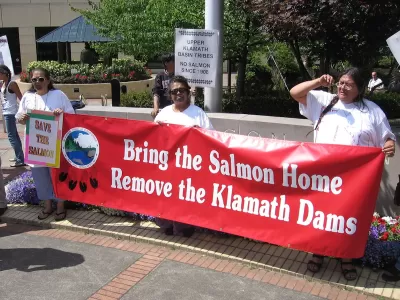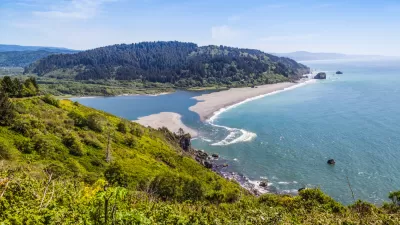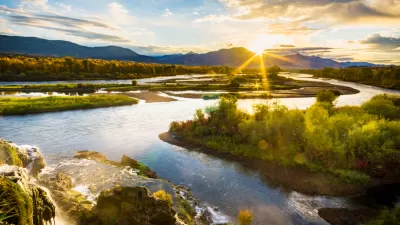Salmon can now move freely along the river and its tributaries for the first time in over a century.

The last of four dams on the Klamath River on the border between California and Oregon was demolished last week, signaling the completion of the nation’s largest-ever dam removal project.
As Rachel Ramirez explains in an article for CNN, “The removal of the four hydroelectric dams — Iron Gate Dam, Copco Dams 1 and 2, and JC Boyle Dam — allows the region’s iconic salmon population to swim freely along the Klamath River and its tributaries, which the species have not been able to do for over a century since the dams were built.”
The project is hailed as a victory for local tribal nations such as the Yurok, who have been fighting for the dams’ removal for decades. Although the dams were built to produce hydroelectric power, they only contributed 2 percent or less of PacifiCorp’s energy supply. Mark Bransom, chief executive officer of the Klamath River Renewal Corporation, says the corporation will now engage in further restoration work that includes the planting of almost 16 billion native plant seeds in the Klamath Basin.
FULL STORY: The largest dam removal project in the US is completed – a major win for Indigenous tribes

Planetizen Federal Action Tracker
A weekly monitor of how Trump’s orders and actions are impacting planners and planning in America.

Congressman Proposes Bill to Rename DC Metro “Trump Train”
The Make Autorail Great Again Act would withhold federal funding to the system until the Washington Metropolitan Area Transit Authority (WMATA), rebrands as the Washington Metropolitan Authority for Greater Access (WMAGA).

The Simple Legislative Tool Transforming Vacant Downtowns
In California, Michigan and Georgia, an easy win is bringing dollars — and delight — back to city centers.

Albuquerque’s Microtransit: A Planner’s Answer to Food Access Gaps
New microtransit vans in Albuquerque aim to close food access gaps by linking low-income areas to grocery stores, cutting travel times by 30 percent and offering planners a scalable model for equity-focused transit.

This City Will Pay You to Meet Your Neighbors
A North Kansas City grant program offers up to $400 for residents to throw neighborhood block parties.

Commentary: Our Silence Will Not Protect Us
Keeping our heads down and our language inoffensive is not the right response to the times we’re in. Solidarity and courage is.
Urban Design for Planners 1: Software Tools
This six-course series explores essential urban design concepts using open source software and equips planners with the tools they need to participate fully in the urban design process.
Planning for Universal Design
Learn the tools for implementing Universal Design in planning regulations.
Smith Gee Studio
City of Charlotte
City of Camden Redevelopment Agency
City of Astoria
Transportation Research & Education Center (TREC) at Portland State University
US High Speed Rail Association
City of Camden Redevelopment Agency
Municipality of Princeton (NJ)




























